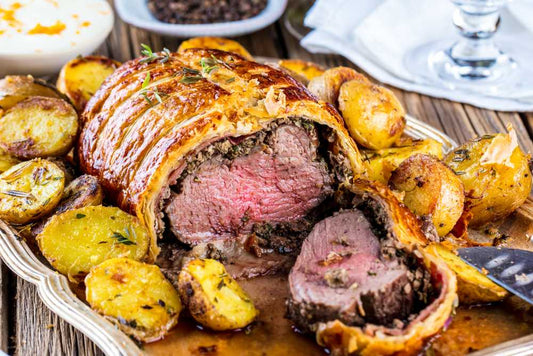Matcha green tea is renowned for its vibrant color, unique flavor, and numerous health benefits. As an integral part of Japanese tea culture and an increasingly popular choice in health-conscious circles, it’s essential to understand its caffeine content and how it compares to other beverages. This comprehensive guide will delve into the caffeine content in matcha green tea, offering insights into its effects, comparisons with other caffeinated drinks, and tips for enjoying it to its fullest.
Understanding Matcha Green Tea
Matcha green tea is a powdered form of green tea made from specially grown and processed tea leaves. Unlike traditional green tea, where leaves are steeped and removed, matcha involves consuming the entire leaf in powdered form, providing a more concentrated flavor and nutrient profile. This unique preparation method impacts its caffeine content, making it distinct from other green teas.
Caffeine Content in Matcha Green Tea
Matcha vs. Regular Green Tea
The caffeine content in matcha green tea is notably higher than that of regular green tea. While a typical cup of brewed green tea contains about 20-30 milligrams of caffeine per 8-ounce serving, matcha contains significantly more due to the whole leaf consumption. On average, one serving of matcha (about 1 gram of powder, or ½ to 1 teaspoon) provides approximately 60-70 milligrams of caffeine. This concentration makes matcha a potent source of caffeine compared to its traditional counterpart.
Factors Influencing Caffeine Levels
Several factors influence the caffeine levels in matcha green tea:
- Grade of Matcha: Higher-grade matcha, often used in traditional Japanese tea ceremonies, typically has higher caffeine content compared to lower grades.
- Preparation Method: The amount of matcha powder used and the water temperature can affect caffeine concentration. Using more powder or hotter water can extract more caffeine.
- Growing Conditions: Tea leaves grown in shaded conditions (used to produce matcha) tend to have higher caffeine levels compared to those grown in full sunlight.
Comparing Matcha Green Tea with Other Caffeinated Beverages
Matcha vs. Coffee
Coffee is generally known for its high caffeine content, with an average 8-ounce cup containing around 95 milligrams of caffeine. In comparison, matcha’s caffeine content is lower but more stable due to its unique release mechanism. The caffeine in matcha is released slowly, providing a more sustained energy boost without the rapid spikes and crashes often associated with coffee consumption.
Matcha vs. Black Tea
Black tea usually contains about 40-70 milligrams of caffeine per 8-ounce cup. The caffeine content in matcha can be similar or slightly higher, depending on the amount of powder used and the preparation method. However, matcha's slower caffeine release can offer a steadier, longer-lasting energy effect compared to black tea.
Matcha vs. Energy Drinks
Energy drinks often contain high levels of caffeine, ranging from 80 to 200 milligrams per serving. While matcha’s caffeine content is lower, it provides a natural and less jittery alternative. Additionally, matcha contains L-theanine, an amino acid that promotes relaxation and helps to counteract the overstimulation often experienced with energy drinks.
Health Benefits of Matcha Green Tea
Sustained Energy and Alertness
The caffeine in matcha, combined with L-theanine, provides a balanced energy boost. L-theanine promotes relaxation and helps to smooth out the effects of caffeine, leading to sustained alertness without the typical crash.
Antioxidant Properties
Matcha is rich in antioxidants, particularly catechins, which are beneficial for overall health. These antioxidants help combat oxidative stress and support cellular health.
Metabolism Boost
The caffeine and catechins in matcha can boost metabolism and support fat oxidation, making it a popular choice for those looking to manage their weight.
How to Enjoy Matcha Green Tea
Preparing Matcha
To prepare matcha, sift the powder to avoid clumps, then whisk it with hot water (not boiling) until frothy. Traditional matcha preparation involves a bamboo whisk and bowl, but modern tools like frothers can also be used.
Matcha in Recipes
Matcha can be incorporated into various recipes beyond tea. It is popular in smoothies, lattes, and baked goods, adding both flavor and a caffeine boost. For example, matcha lattes blend matcha with milk for a creamy, energizing beverage.
Moderation and Balance
While matcha offers numerous benefits, moderation is key. Excessive caffeine consumption can lead to side effects such as insomnia or anxiety. A typical recommendation is to enjoy 1-2 servings of matcha per day, balancing it with other sources of hydration and nutrients.
Conclusion
Matcha green tea stands out not only for its vibrant flavor and rich history but also for its significant caffeine content and health benefits. With approximately 60-70 milligrams of caffeine per serving, matcha provides a robust alternative to other caffeinated beverages, offering a more balanced and sustained energy boost. Understanding its caffeine content and how it compares to other drinks can help you enjoy matcha to its fullest, whether you’re sipping it in a traditional tea ceremony or incorporating it into your daily routine.


